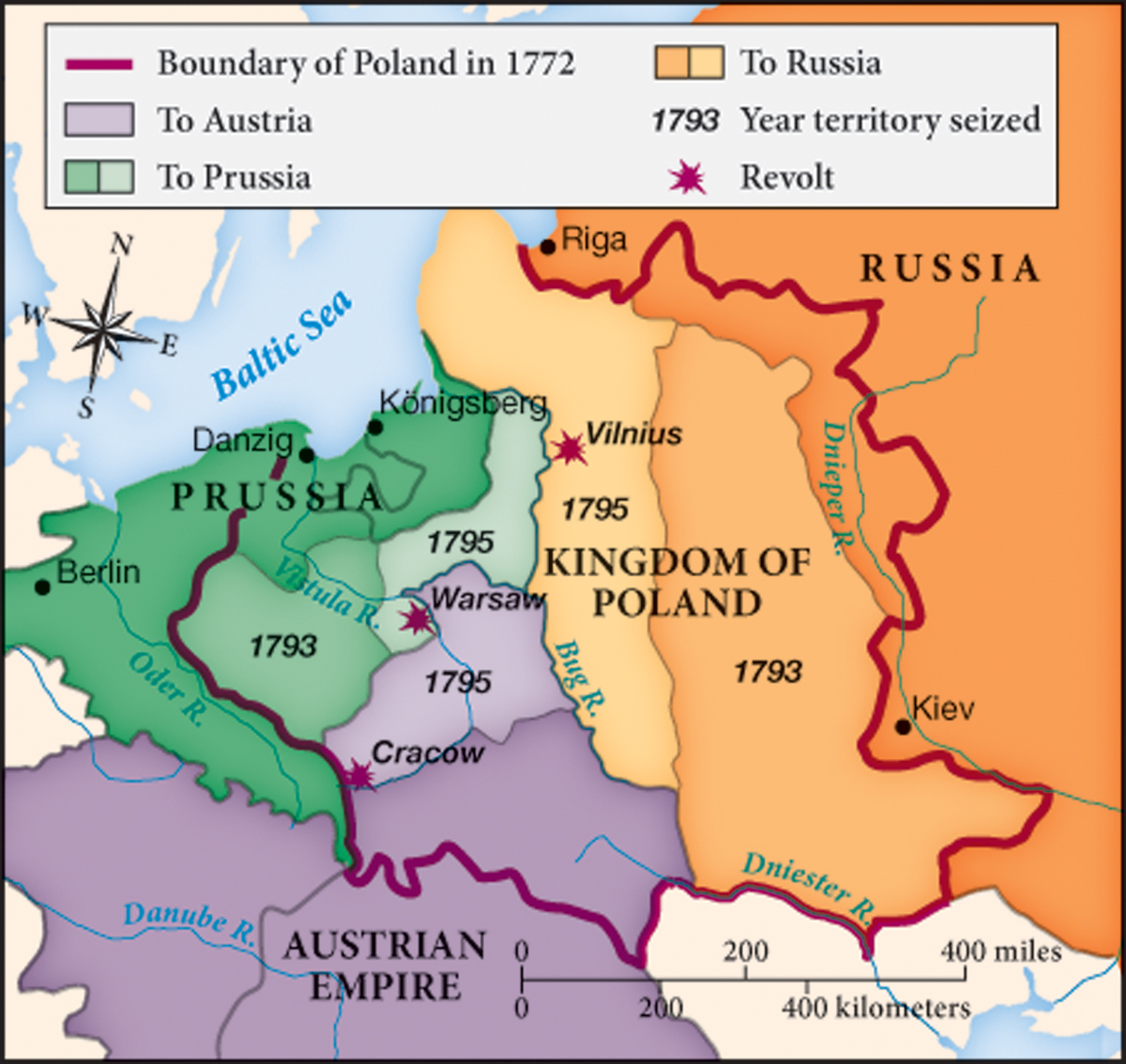Poland Extinguished, 1793–1795
Poland Extinguished, 1793–1795

France had survived in 1793 in part because its enemies were busy elsewhere. Fearing French influence, Prussia joined Russia in dividing up generous new slices of territory in the second partition of Poland (Map 19.3). As might be expected, Poland’s reform movement became even more pro-French. Some leaders fled abroad, including Tadeusz Kościuszko (1746–1817), an officer who had been a foreign volunteer in the War of American Independence and who now escaped to Paris. In the spring of 1794, Kościuszko returned from France to lead a nationalist revolt.
The uprising failed. Kościuszko won a few victories, but when the Russian empress Catherine the Great’s forces regrouped, they routed the Poles and Lithuanians. Kościuszko and other Polish Patriot leaders languished for years in Russian and Austrian prisons. Taking no further chances, Russia, Prussia, and Austria wiped Poland completely from the map in the third partition (1795). “The Polish question” would plague international relations for more than a century as Polish rebels flocked to any international upheaval that might undo the partitions. Beyond all this maneuvering lay the unsolved problem of Polish serfdom, which isolated the nation’s gentry and townspeople from the rural masses.